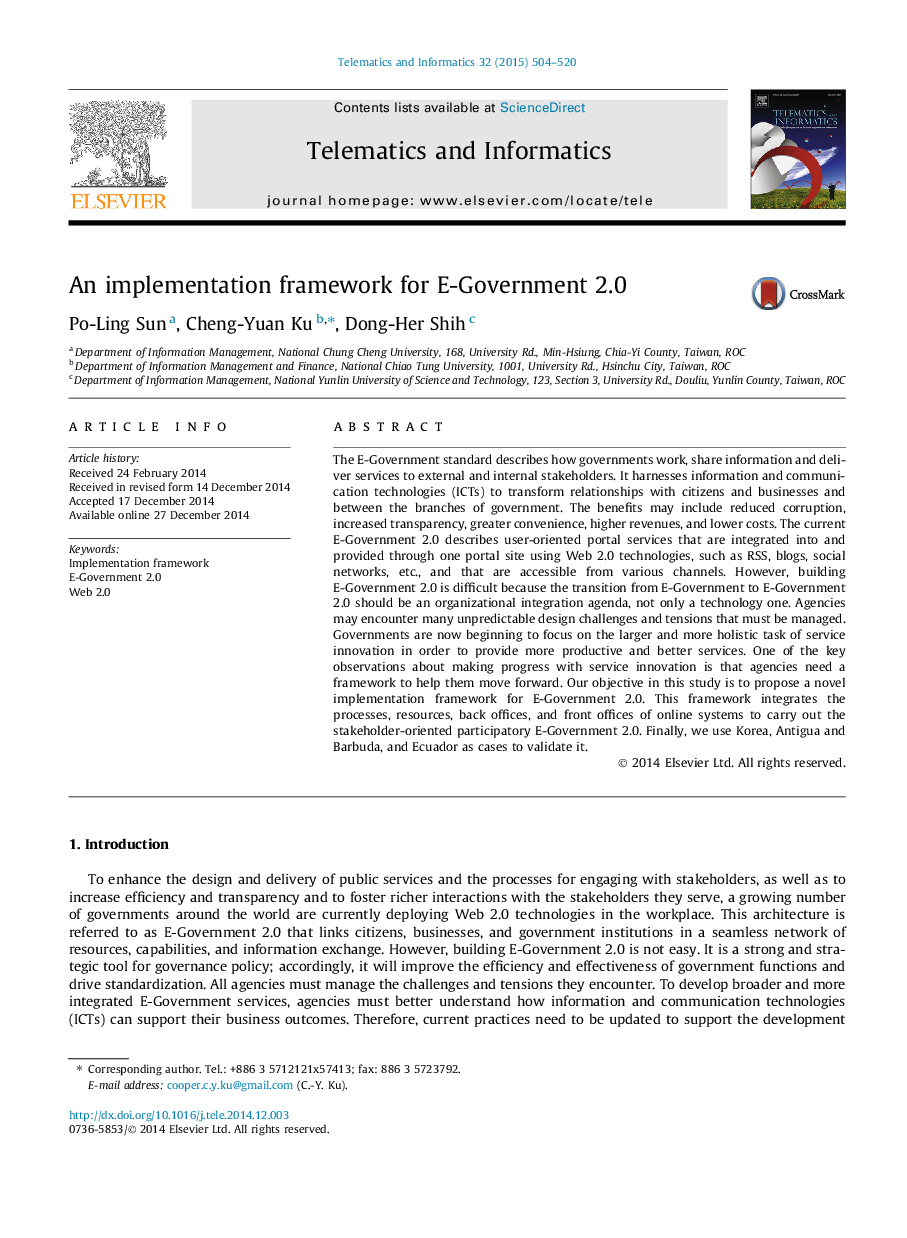| Article ID | Journal | Published Year | Pages | File Type |
|---|---|---|---|---|
| 464367 | Telematics and Informatics | 2015 | 17 Pages |
•In transitioning to E-Government 2.0, agencies often encounter challenges.•Making progress with service innovation needs an implementation framework to assist.•A novel implementation framework for E-Government 2.0 is proposed.•Korea, Antigua and Barbuda, and Ecuador are used as cases to validate this framework.
The E-Government standard describes how governments work, share information and deliver services to external and internal stakeholders. It harnesses information and communication technologies (ICTs) to transform relationships with citizens and businesses and between the branches of government. The benefits may include reduced corruption, increased transparency, greater convenience, higher revenues, and lower costs. The current E-Government 2.0 describes user-oriented portal services that are integrated into and provided through one portal site using Web 2.0 technologies, such as RSS, blogs, social networks, etc., and that are accessible from various channels. However, building E-Government 2.0 is difficult because the transition from E-Government to E-Government 2.0 should be an organizational integration agenda, not only a technology one. Agencies may encounter many unpredictable design challenges and tensions that must be managed. Governments are now beginning to focus on the larger and more holistic task of service innovation in order to provide more productive and better services. One of the key observations about making progress with service innovation is that agencies need a framework to help them move forward. Our objective in this study is to propose a novel implementation framework for E-Government 2.0. This framework integrates the processes, resources, back offices, and front offices of online systems to carry out the stakeholder-oriented participatory E-Government 2.0. Finally, we use Korea, Antigua and Barbuda, and Ecuador as cases to validate it.
